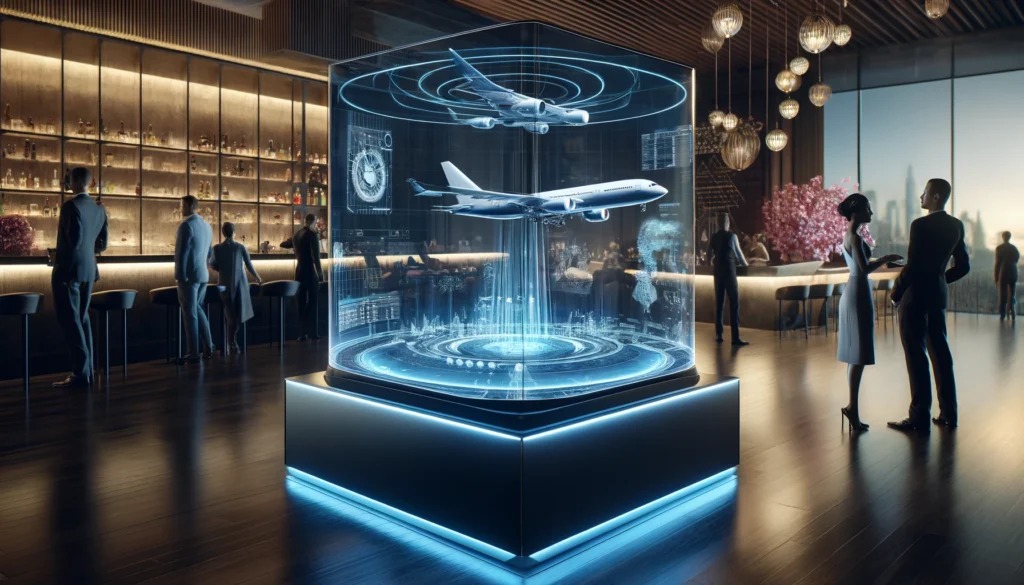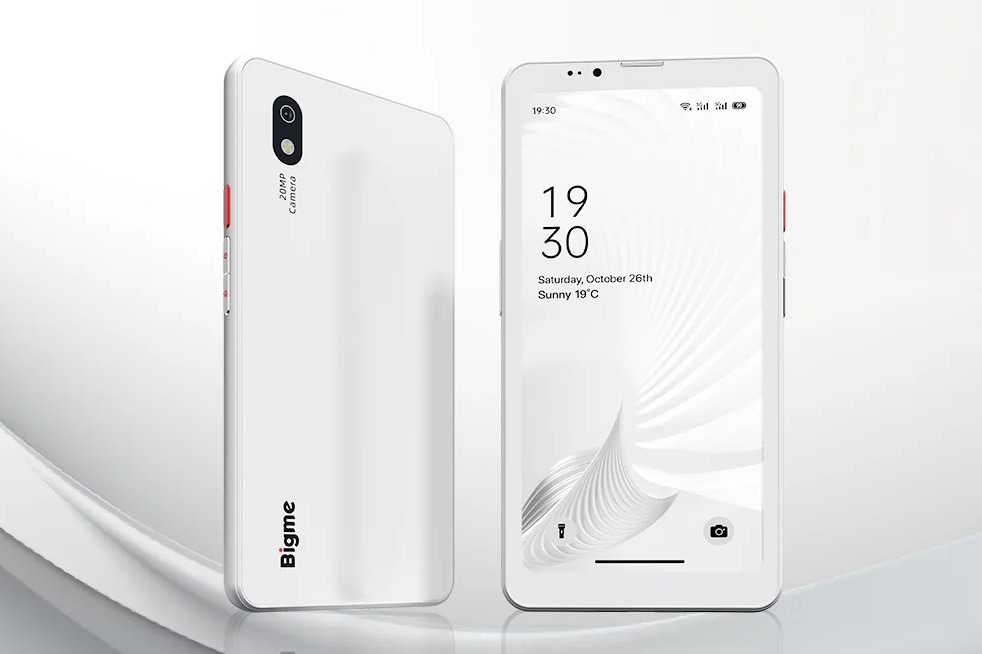
Holographic Displays: Will Your Next Call Be 3D?
“Exploring the Future of Communication: How Holographic Displays Are Poised to Transform Video Calls, Business Meetings, Education, Healthcare, and Entertainment by Projecting Life-Sized, Interactive 3D Images into Real Space, Enabling Natural, Immersive Interactions Without Glasses or Headsets, Bridging Physical and Digital Presence, and Redefining Human Connection in the Era of Advanced AI, 5G, and Next-Generation Display Technologies.”
✨ Raghav Jain

Holographic Displays: Will Your Next Call Be 3D?
In the rapidly evolving world of technology, communication has always been at the forefront of innovation. From the invention of the telephone in the 19th century to the proliferation of video calls in the 21st century, humans have continually sought more immersive and natural ways to connect. Today, we stand on the threshold of a new era—holographic displays that promise to transform the way we communicate, work, and experience digital content. Imagine attending a meeting where your colleague appears in three dimensions right in your room, or sharing a moment with family across the globe as if they were physically present. This is not science fiction—it is the vision driving the development of holographic displays.
What Are Holographic Displays?
Holographic displays, also known as volumetric or 3D displays, are devices capable of projecting three-dimensional images into physical space. Unlike traditional screens that present flat, two-dimensional images, holographic displays create the illusion of depth, allowing viewers to see objects from multiple angles without the need for special glasses. These systems work by manipulating light waves to produce interference patterns that the human eye interprets as a 3D image.
There are several types of holographic displays currently being explored:
- Laser-based Holography: Uses laser beams and interference patterns to generate high-resolution 3D images. While highly precise, these systems are often expensive and complex.
- Digital Light Processing (DLP) Holograms: Employ micro-mirrors to project 3D images onto a screen or into space. These displays offer scalability for commercial applications.
- Electro-holography: Leverages digital computation to create holographic images dynamically. This approach promises real-time holographic video calls and interactive experiences.
- Light Field Displays: Capture and reproduce light from multiple angles, simulating depth perception naturally without glasses.
These technologies are advancing rapidly, with prototypes already capable of projecting life-sized 3D images of people, objects, and scenes.
The Science Behind 3D Holographic Calls
Holographic communication relies on several interdependent technologies. Firstly, high-fidelity 3D scanning captures the shape, texture, and motion of a subject in real-time. Techniques such as structured light scanning and LiDAR mapping allow for highly accurate 3D models. Next, data compression algorithms are essential to transmit these enormous amounts of information efficiently over networks, especially as 5G and future 6G networks promise ultra-fast speeds and minimal latency. Finally, holographic projection systems reconstruct the data as a tangible 3D image, visible from multiple perspectives.
The integration of these technologies could enable a futuristic form of communication, where colleagues, friends, or family appear in a holographic form, interact naturally, and move within the viewer’s space. Unlike video calls, where depth perception is limited and gestures are flattened, holographic calls could provide an almost tactile sense of presence.
Applications Beyond Video Calls
While the idea of 3D phone calls captures the imagination, holographic displays are poised to revolutionize multiple sectors:
- Healthcare: Surgeons could collaborate in real-time on complex procedures, viewing a 3D hologram of a patient’s anatomy without being in the same operating room. Remote consultations could feel as intimate as in-person visits.
- Education: Students could interact with historical figures, chemical reactions, or anatomical models as if they were physically present. Holographic classrooms could transform distance learning into an immersive, engaging experience.
- Business and Collaboration: Corporate meetings could involve virtual boardrooms populated with holographic representations of team members, fostering more natural interactions and decision-making.
- Entertainment: Concerts, theater performances, and gaming could integrate holographic elements, enabling audiences to experience content in three dimensions without specialized equipment.
- Retail and Marketing: Consumers could view products as life-sized holograms before making purchases, offering a richer, more informed shopping experience.
The possibilities extend beyond mere visual novelty—they offer tangible enhancements to productivity, learning, and social engagement.
Challenges and Limitations
Despite the excitement, several obstacles must be addressed before holographic calls become commonplace:
- Technical Complexity: Real-time holographic communication requires precise 3D capture, high-speed data processing, and complex projection systems. Current hardware remains bulky and expensive.
- Bandwidth Requirements: Holographic video generates enormous data streams. Even with 5G networks, transmitting high-resolution, full-body holograms in real time presents significant challenges.
- Content Creation: Producing high-quality 3D content is more labor-intensive than traditional 2D media. This limits the availability of holographic-ready content for consumers.
- User Accessibility: For holographic calls to become widespread, systems must be affordable, easy to use, and compatible with existing communication platforms.
- Privacy and Security: Capturing and transmitting 3D representations of individuals introduces new concerns about consent, data security, and digital identity theft.
Innovators are actively working to overcome these hurdles, with breakthroughs in AI-driven compression, photonic chips, and portable holographic projectors showing promise.
The Role of Artificial Intelligence in Holography
Artificial intelligence (AI) plays a critical role in making holographic communication feasible. AI algorithms can reconstruct 3D models from partial scans, predict motion for smoother holographic video, and compress massive data streams for real-time transmission. For instance, AI-driven depth mapping can fill gaps in 3D scans, ensuring accurate representations even in low-light or dynamic environments. AI can also enhance interaction by enabling gesture recognition and voice-controlled holographic interfaces, creating a seamless and intuitive experience.
The Timeline for Adoption
While prototypes exist today, widespread adoption of holographic calls is still several years away. Analysts predict that within the next 5 to 10 years, we could see consumer-grade holographic displays entering the market, particularly in high-end enterprise, healthcare, and entertainment sectors. As manufacturing costs decrease, devices could eventually reach mainstream households, transforming how people socialize, learn, and collaborate.
Early adoption will likely focus on professional applications where immersive communication provides a measurable advantage. Over time, as technology matures and costs drop, holographic calls may become a standard feature of smartphones, laptops, and augmented reality (AR) glasses.
Holographic Displays vs. Virtual Reality and Augmented Reality
Holographic displays differ from virtual reality (VR) and augmented reality (AR) in significant ways:
- Virtual Reality: Immerses users in a fully digital environment, often requiring headsets that obscure the real world.
- Augmented Reality: Overlays digital information onto the physical world, typically via smartphones or AR glasses.
- Holographic Displays: Project 3D images into real space without obstructing the user’s vision, providing a natural viewing experience accessible from multiple angles.
While VR and AR have seen significant adoption, holographic displays offer a more natural and socially engaging form of communication, blending seamlessly into physical environments without requiring wearable devices.
Future Prospects and Societal Implications
The rise of holographic communication could have profound societal implications:
- Global Collaboration: Teams across continents could interact as if they were in the same room, reducing travel costs and carbon footprints.
- Redefining Social Interaction: Family and friends could share moments in 3D, enhancing emotional connections despite physical distance.
- Digital Economy Expansion: New industries may emerge around holographic content creation, holographic marketing, and immersive entertainment.
- Privacy Considerations: Holographic technology may prompt new regulations regarding the capture and distribution of 3D personal data.
The integration of holographic displays into daily life may redefine human connection, making digital interactions more lifelike, empathetic, and engaging.
Holographic displays represent one of the most revolutionary advancements in the field of communication technology, promising to fundamentally change the way humans interact, collaborate, and experience digital content, potentially making our next calls fully three-dimensional and immersive; unlike traditional video calls that compress reality into a flat, two-dimensional frame, holographic technology allows for the projection of life-sized, three-dimensional images into physical space, creating an unprecedented sense of presence and realism that could allow individuals to feel as though they are sharing the same room with someone located thousands of miles away, and this capability is made possible through the convergence of several sophisticated technologies including high-resolution 3D scanning, real-time motion capture, advanced data compression algorithms, and innovative projection systems such as laser-based holography, digital light processing (DLP) holograms, electro-holography, and light field displays, each of which has its own advantages and technical challenges, from the extreme precision of laser interference patterns to the flexibility and scalability of DLP projectors, with electro-holography offering the potential for dynamic, real-time holographic video that could transform remote communication into a lifelike experience where gestures, expressions, and spatial positioning are accurately represented; the science behind holographic calls relies heavily on capturing the complete geometry, texture, and movement of a subject in real time, employing techniques like structured light scanning and LiDAR mapping to ensure that every nuance of a person’s appearance and motion is accurately recorded, followed by powerful AI-driven algorithms that compress and optimize this massive amount of data so that it can be transmitted over high-speed networks like 5G and, in the future, 6G, which promise the ultra-low latency necessary for real-time holographic interactions, and upon arrival, the holographic projection system reconstructs the 3D image in physical space, visible from multiple angles, allowing for natural, lifelike communication where both participants can perceive depth, scale, and proximity in ways impossible with conventional video; the potential applications for this technology extend far beyond casual video calls, encompassing critical domains such as healthcare, where surgeons could collaborate across continents on intricate procedures by interacting with detailed 3D representations of a patient’s anatomy, or in education, where students could experience historical events, complex scientific phenomena, or anatomical dissections as immersive, manipulable holograms that enhance comprehension and retention; in business, holographic meetings could revolutionize remote collaboration, replacing static video grids with virtual boardrooms populated by life-like 3D avatars, thereby improving engagement, non-verbal communication, and decision-making efficiency, while in entertainment, concerts, theater, and gaming could adopt holographic projections to create interactive experiences that blur the line between digital and physical reality, and in retail, consumers could examine products as true-to-scale holograms before making purchase decisions, enhancing the e-commerce experience; however, despite its immense promise, holographic display technology faces significant challenges that must be addressed before it can achieve mainstream adoption, including the technical complexity of capturing and projecting high-fidelity 3D content, the enormous bandwidth requirements necessary to transmit full-body, high-resolution holographic video in real time, the labor-intensive nature of producing holographic-ready content, the need to make devices affordable and user-friendly, and the pressing concerns regarding privacy and security, as transmitting accurate 3D representations of people introduces new risks related to consent, identity theft, and unauthorized replication of digital likenesses; artificial intelligence plays an indispensable role in overcoming many of these hurdles, with sophisticated algorithms capable of reconstructing complete 3D models from partial scans, predicting motion to create smoother holographic videos, compressing vast data streams for real-time transmission, and facilitating gesture and voice recognition that allows users to interact with holographic content intuitively, while also enhancing quality by filling gaps and correcting errors in the captured data, which is critical for ensuring that holographic representations are both accurate and engaging; while consumer-ready holographic systems are not yet widely available, prototypes from companies around the world demonstrate the feasibility of this technology, showcasing life-sized holograms of individuals that can move, gesture, and interact within physical spaces, and these early systems hint at a future where remote communication could feel indistinguishable from in-person interactions, potentially transforming social dynamics, reducing the need for physical travel, and creating new opportunities for global collaboration; moreover, holographic displays differ from other immersive technologies like virtual reality (VR) and augmented reality (AR) in that they do not require users to wear headsets or obstruct their view of the real world; VR immerses the user in a fully digital environment, often isolating them from physical surroundings, while AR overlays digital objects onto the real world, usually via glasses or screens, whereas holographic displays seamlessly project 3D images into real space, viewable from multiple perspectives, making communication more natural and socially engaging; as the technology matures, it is expected that holographic calls will transition from enterprise and specialized applications into mainstream usage over the next five to ten years, driven by advances in photonic chips, AI-powered compression techniques, and the proliferation of ultra-fast mobile networks, and as costs decrease, these systems could become commonplace in households, allowing friends, families, and colleagues to interact in ways previously only imagined in science fiction, potentially reshaping societal norms, redefining social interaction, and creating entirely new digital economies around holographic content creation, immersive advertising, and entertainment; however, as holographic technology becomes more integrated into daily life, ethical, privacy, and security considerations will need to be carefully addressed, with new regulations and protocols likely necessary to ensure that the capture, transmission, and storage of 3D personal data is conducted responsibly, and to prevent misuse such as unauthorized replication or digital impersonation, which could have profound implications for identity and personal security; in conclusion, while the widespread adoption of holographic displays and 3D calls is not imminent, the trajectory of technological progress suggests that within the next decade, we may witness a paradigm shift in communication, moving from flat, screen-based interactions to fully immersive, three-dimensional experiences, where humans can connect, collaborate, and socialize with a sense of presence and realism previously unattainable, ultimately ushering in a new era of digital communication that blends the physical and virtual worlds in ways that are both compelling and transformative.
The promise of holographic displays to transform everyday communication into a fully immersive, three-dimensional experience represents a profound leap forward in technology, one that could redefine not only how we interact digitally but also how we perceive presence and connection in the modern era, as these displays create realistic volumetric images by manipulating light waves and projecting them into physical space, allowing users to view life-sized representations of people, objects, or scenes from multiple angles without the need for special glasses or headsets, a feat achieved through the integration of several sophisticated technologies, including high-precision 3D scanning that captures the contours, textures, and motions of a subject, advanced photonics and projection systems capable of reconstructing these captured details into visible holograms, and artificial intelligence algorithms that optimize the massive data streams required for real-time transmission by compressing, predicting, and enhancing the visual and motion fidelity of the holographic content, which is particularly crucial given the enormous bandwidth demands of high-resolution, full-body holographic video, especially as current broadband infrastructures struggle to support such volumes of data; furthermore, the potential applications of this technology extend far beyond casual social interactions, promising to revolutionize healthcare by enabling surgeons to collaborate across continents with interactive, three-dimensional patient models, to enhance education through the projection of dynamic, manipulable learning objects such as historical recreations, molecular structures, or complex mechanical systems, and to transform business and enterprise communication by replacing static video conference grids with virtual meeting rooms where participants’ holographic avatars can interact naturally, convey body language, and establish a more authentic sense of presence, which in turn could lead to increased engagement, faster decision-making, and more effective collaboration across global teams; in addition, the entertainment industry stands to benefit enormously, as concerts, theater productions, sports broadcasting, and video games can integrate holographic elements to create immersive experiences that blur the lines between digital content and physical reality, while the retail sector could see a paradigm shift as consumers preview products as life-size holograms before purchase, enhancing understanding of scale, color, and functionality and reducing the disconnect between online shopping and physical product experience, all of which point to a future where holographic technology is not merely a novelty but a core part of daily life, fundamentally altering human interaction and digital content consumption; despite these promising applications, the journey toward widespread holographic adoption faces significant challenges, including the high cost and complexity of holographic capture, processing, and display systems, the need for sophisticated data compression and transmission protocols to accommodate the enormous file sizes involved, and the current lack of standardized methods for producing and sharing holographic content, which could limit accessibility and slow mainstream integration, while privacy and security issues also loom large, as the creation, storage, and transmission of detailed 3D representations of individuals introduce risks such as identity theft, unauthorized replication, and misuse of personal likeness, necessitating robust encryption, legal frameworks, and ethical guidelines to protect users and maintain trust in the technology; moreover, while virtual reality (VR) and augmented reality (AR) technologies have made significant inroads in immersive experiences, holographic displays offer a unique advantage by projecting images directly into space without obstructing the user’s view of the real world, enabling interactions that are more natural and socially intuitive than those in VR, where users are isolated in fully digital environments, or AR, where digital overlays are constrained to screens or wearable devices, and this distinction positions holography as a potentially transformative medium for communication, collaboration, and entertainment, particularly in professional and social contexts that require realistic human presence; technological advancements in AI are pivotal to overcoming many of these barriers, as machine learning algorithms can reconstruct missing data in 3D scans, predict motion to create smoother holographic videos, enhance image resolution, and manage compression in real-time to reduce latency and bandwidth load, while also enabling gesture recognition, voice interaction, and other intuitive control mechanisms that enhance user experience, and ongoing research in photonic computing, laser projection, and light field manipulation continues to push the boundaries of what is possible, bringing the prospect of real-time, life-sized holographic calls closer to reality, with several companies already demonstrating prototypes that showcase realistic human avatars capable of interaction, movement, and expression within physical spaces; looking ahead, analysts predict that within the next five to ten years, we may see consumer-grade holographic systems enter high-end enterprise, healthcare, and entertainment markets, eventually becoming more affordable and widely accessible as manufacturing costs decrease, network infrastructure improves with the adoption of 5G and future 6G technology, and AI algorithms become increasingly efficient, thereby enabling households, businesses, and educational institutions to incorporate holographic communication into everyday routines, potentially reducing travel needs, enhancing remote collaboration, and creating new forms of social and professional engagement; however, with this transformative potential comes the need for careful consideration of societal, ethical, and regulatory implications, as the integration of holographic communication into daily life may redefine privacy norms, challenge notions of identity and consent, and necessitate new standards for data protection, while simultaneously offering unparalleled opportunities for global connectivity, immersive learning, and creative expression, ultimately positioning holographic displays not just as a technological novelty but as a foundational shift in how humans interact, bridging the gap between physical and digital presence and opening doors to experiences that were once confined to science fiction, where the future of communication is no longer flat and screen-bound, but multidimensional, interactive, and profoundly human, offering a glimpse into a world where distance no longer diminishes presence, collaboration is more natural and engaging, and the very concept of being “together” can transcend physical limitations, reshaping the landscape of work, education, entertainment, and social connection in ways that are only beginning to be imagined.
Conclusion
Holographic displays represent a transformative frontier in communication technology. By projecting 3D images into real space, they offer a sense of presence and depth that surpasses traditional video calls. From business collaboration and healthcare to education and entertainment, the potential applications are vast. While challenges such as technical complexity, bandwidth requirements, and privacy concerns remain, advancements in AI, 5G networks, and photonic technologies are steadily bringing holographic communication closer to reality. Within the next decade, it is plausible that holographic calls could become a part of everyday life, fundamentally changing how humans interact, work, and socialize. The convergence of holography, AI, and ultra-fast networks may soon allow us to not just see but be seen in three dimensions, heralding a new era of digital presence.
Q&A Section
Q1 :- What exactly is a holographic display?
Ans:- A holographic display is a device that projects three-dimensional images into physical space, allowing viewers to see depth and interact with visuals from multiple angles without special glasses.
Q2 :- How are holographic calls different from video calls?
Ans:- Unlike video calls, holographic calls create a 3D representation of people or objects, providing a sense of presence and depth, making interactions feel more natural and immersive.
Q3 :- What are the main challenges of holographic communication?
Ans:- Key challenges include high data and bandwidth requirements, technical complexity, content creation limitations, user accessibility, and privacy/security concerns.
Q4 :- Can holographic calls work on smartphones today?
Ans:- Currently, consumer-grade smartphones are not capable of full 3D holographic calls. The technology is still in experimental and prototype stages, primarily in enterprise and specialized applications.
Q5 :- How does AI help in holographic displays?
Ans:- AI assists in reconstructing 3D models, predicting motion, compressing massive data streams for real-time transmission, and enabling gesture and voice interactions for a seamless user experience.
Similar Articles
Find more relatable content in similar Articles

Neurotechnology: Connecting th..
Neurotechnology is revolutioni.. Read More

E-Ink Smartphones: The Next Mi..
E-Ink smartphones are redefini.. Read More

Holographic Displays: Will You..
“Exploring the Future of Commu.. Read More

The Psychology of Digital Addi..
Digital addiction is a growing.. Read More
Explore Other Categories
Explore many different categories of articles ranging from Gadgets to Security
Smart Devices, Gear & Innovations
Discover in-depth reviews, hands-on experiences, and expert insights on the newest gadgets—from smartphones to smartwatches, headphones, wearables, and everything in between. Stay ahead with the latest in tech gear
Apps That Power Your World
Explore essential mobile and desktop applications across all platforms. From productivity boosters to creative tools, we cover updates, recommendations, and how-tos to make your digital life easier and more efficient.
Tomorrow's Technology, Today's Insights
Dive into the world of emerging technologies, AI breakthroughs, space tech, robotics, and innovations shaping the future. Stay informed on what's next in the evolution of science and technology.
Protecting You in a Digital Age
Learn how to secure your data, protect your privacy, and understand the latest in online threats. We break down complex cybersecurity topics into practical advice for everyday users and professionals alike.
© 2025 Copyrights by rTechnology. All Rights Reserved.